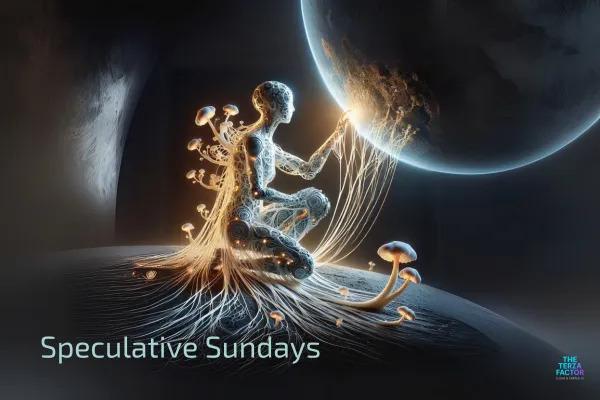
Speculative Sundays #5: What If AI Isn't Artificial?
⚡ Speculative Sundays #5: What If AI Isn’t Just Artificial?
Introducing Synthetic Eco-Intelligence
Disclaimer: This post blends scientific developments with speculative ideas. Not all content is based on established research.
We often hear about Artificial Intelligence in terms of speed, prediction, and productivity. It learns from data. It generates text. It automates.
And while all of that is true… it’s also just a sliver of the story.
Because what if AI doesn’t need to mimic us?
What if it can help us understand everything else?
Not just human speech—but the silent intelligence of:
Fungal networks,
Forests and root systems,
Bioelectric pulses in plants,
Even the patterns that ripple through weather, microbes, and tides?
This is where we begin to talk about something I call:
🌿 Synthetic Eco-Intelligence
A way of thinking about AI not as artificial human thought, but as a bridge to all the non-human thought already happening around us.
We Already Know How to Grow With Nature
This isn’t a leap into fantasy. We’ve been collaborating with nature’s logic for generations.
In India, root bridges are grown over rivers by guiding the living roots of trees—living infrastructure that strengthens itself over time.
In Australia and the UK, artists and designers are shaping trees into chairs, lamps, and homes, not by cutting them down—but by guiding their growth.
In Germany, buildings are being designed using “Baubotanik”—a fusion of steel scaffolds and live trees that become the structure over time.
These are not built.
They’re cultivated.
They require attention. Relationship. Time.
And now, with AI, we may have the tools to listen to these systems more deeply—and partner with them in new ways.
So… What If AI Could Learn From Mycelium?
Imagine if our models were inspired by fungal networks:
Decentralized. Cooperative. Efficient across vast distances.
Or if AI could help us translate plant signals into emotional indicators, or monitor ecosystem stress in real time—not to extract, but to adapt.
Synthetic Eco-Intelligence isn’t about replacing human creativity.
It’s about remembering that intelligence exists everywhere—and designing systems that can help us reconnect with it.
This Isn’t the Future. It’s Already Happening.
Researchers are tracking electrical signals in fungi.
Scientists are exploring plant neurobiology and "infomorphic neurons"—non-human ways of sensing and responding.
And artists and thinkers (maybe like you) are beginning to ask:
What would it mean to think with the Earth?
🌍 The Roots of Synthetic Eco-Intelligence
A Manifesto
We believe intelligence is not limited to the human brain.
It grows underground.
It pulses through leaves.
It spans geologic time.
We believe AI can do more than replicate human thought.
It can help us perceive what life has always known.
Synthetic eco-intelligence is not artificial.
It’s a mirror of nature’s wisdom—
Modeled in code,
Bridging worlds,
Tuning us to signals we’ve long ignored.
We do not seek control.
We seek connection.
Not dominance.
Dialogue.We are not building machines to think for us.
We are building systems to think with the Earth.

This image was AI-generated, inspired by real-world projects like Full Grown and Pooktre. These living chairs are cultivated—not constructed—by guiding trees over time into functional forms. Proof that design and nature don’t have to compete… they can collaborate.
🤔 What Do You Think?
Could AI help us translate the logic of forests, fungi, or water?
Is it possible that we’ve only been looking at a small sliver of intelligence—and that AI might finally help us see the rest?
Drop your thoughts in the comments.
And if this sparked curiosity, send it to someone who’s ready to think with the planet, not just about it.
🌀 And if this sparked your memory or imagination, share it with a fellow listener.
Because the more voices we invite into the conversation, the more ways we remember:
We’re still here. And we’re listening.
